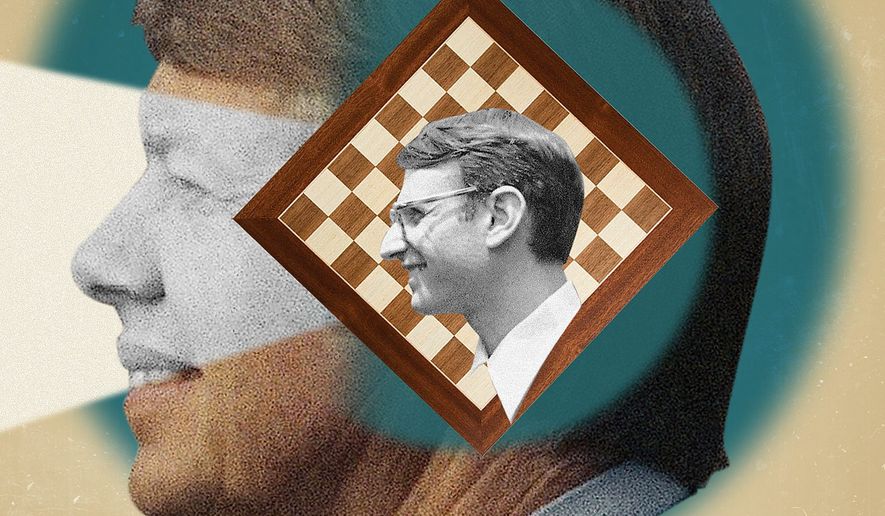OPINION:
Those elected to high office are stars, but the success of their shows often depends on supporting actors: Their advisers.
For nearly 50 years, Stuart E. Eizenstat has been a wise adviser to Democratic leaders. He served as President Clinton’s ambassador to the European Union, and in senior positions at the Departments of State, Treasury and Commerce.
He cut his political and policy teeth earlier, in his 20s, working for Lyndon Johnson and Hubert Humphrey. In 1969, he signed on with Jimmy Carter, who was destined to become governor of Georgia and president of the United States.
Named chief White House domestic policy adviser, Mr. Eizenstat had the president’s ear on just about any issue he cared about. Foreign policy, the Middle East “peace process” in particular, topped that list.
A self-described “policy wonk,” he was known for carrying yellow legal pads on which he kept meticulous records. Over the years since, he has reviewed his reams of notes and conducted more than 350 interviews, endeavoring to come to terms with the events that unfolded, the decisions made in response and how the combination played out during Mr. Carter’s single term in office, 1977-81.
The result is “President Carter: The White House Years,” a book almost a thousand pages long that is part history, part biography, part memoir. What it is not — and for this Mr. Eizenstat deserves credit — is hagiography.
“I’m not nominating Jimmy Carter for a place on Mount Rushmore,” Mr. Eizenstat writes. “He was not a great president but he was a good and productive one.” The author’s “revisionist” goal: To “redeem” the Carter presidency.
In foreign policy, I give President Carter kudos for his emphasis on human rights. If Americans do not stand up for freedom, no one else will. Those who believe the arc of history inevitably “bends toward justice” know nothing about history.
Beyond that, Mr. Carter generally is perceived to have had one great success and one great failure. The former: The peace treaty between Israel and Egypt. The latter: The U.S. response to Iran’s Islamic Revolution and the ensuing hostage crisis.
I’ve never been convinced that Mr. Carter was as pivotal as claimed to Egyptian-Israeli detente. In 1973, on Yom Kippur, the holiest day in the Jewish calendar, President Anwar Sadat launched a war that ended with Egypt soundly defeated. After that, Mr. Sadat understood that to recover lost territory he’d have to stop fighting.
Mr. Eizenstat does not contradict this thesis, but he emphasizes that Mr. Sadat’s historic visit to Jerusalem took place in November 1977. After that, months went by without progress. To conclude the Camp David Accords in September 1978, Mr. Carter had to exert relentless pressure on Israeli Prime Minister Menachem Begin, who was distrustful of Mr. Sadat, and on Arab leaders adamant that Egypt demand concessions the Israelis would not countenance in return for a promise Mr. Sadat’s successors might not keep. Even after Camp David, it would require another six months of tough negotiations to convert the accords into a legally binding treaty.
During this period, with too little White House attention, Iran was unraveling. In January 1979, Mohammad Reza Shah Pahlavi left for exile in Egypt. On Feb. 1, Ruhollah Khomeini returned to Tehran after 14 years in exile.
Mr. Carter was badly advised by the intelligence community and State Department. Neither understood the ayatollah and the jihadist theology/ideology he had been propagating.
Andrew Young, Mr. Carter’s ambassador to the U.N., characterized Ayatollah Khomeini as “some kind of saint.” William Sullivan, the U.S. ambassador in Tehran, compared him to Mohandas Gandhi. A State Department spokesman worried about the possibility of a military coup that “would blow away the moderates and invite the majority to unite behind a radical faction.”
In November, young followers of the ayatollah seized the U.S. embassy in Tehran. It soon became apparent that negotiations would not bring the release of the 52 American diplomats and embassy staff held captive. Mr. Eizenstat advised the president to blockade Iranian oil. Instead, Mr. Carter ordered a military rescue. It was a fiasco and a tragedy — for which the Pentagon deserves blame, even if the buck stops on the desk of the commander in chief.
President Carter did draw lessons. He boosted military spending and, since then, the U.S. has gone on to build the most highly skilled Special Forces the world has ever seen.
Am I now convinced that, on balance, Mr. Carter was a “good and productive” president where foreign policy and national security are concerned? Not entirely. American voters did not err when they decided to deny him a second term; when they turned instead to Ronald Reagan, a movie star who became a political star, an optimistic visionary who set ambitious goals and achieved most of them.
It’s possible I’m being less than fair, in part because I find it difficult to separate who Jimmy Carter was during his White House years from who he has become since leaving office.
In 1994, he convinced President Clinton to make a deal with North Korea that ensured the rogue regime would acquire nuclear weapons. He has developed a disconcerting animosity toward Israel. Most recently, he’s called for lifting sanctions on Syrian dictator and mass murderer Bashar Assad, and providing him U.S. dollars for reconstruction.
Nevertheless, President Carter was lucky to have had Mr. Eizenstat to advise him during his days in the Oval Office. And he is more than lucky to have Mr. Eizenstat to defend his legacy today.
• Clifford D. May is president of the Foundation for Defense of Democracies and a columnist for The Washington Times.




Please read our comment policy before commenting.